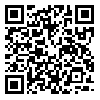Sat, May 10, 2025
[Archive]
Volume 36, Issue 1 (1-2022)
Med J Islam Repub Iran 2022 |
Back to browse issues page
Download citation:
BibTeX | RIS | EndNote | Medlars | ProCite | Reference Manager | RefWorks
Send citation to:



BibTeX | RIS | EndNote | Medlars | ProCite | Reference Manager | RefWorks
Send citation to:
Falahati M, Biabani A, Nobarani M, Beatty A, Karimy M. Willingness to Receive a COVID-19 Vaccine in an Iranian Population: Assessment of Attitudes, Perceived Benefits, and Barriers. Med J Islam Repub Iran 2022; 36 (1) :1003-1009
URL: http://mjiri.iums.ac.ir/article-1-8271-en.html
URL: http://mjiri.iums.ac.ir/article-1-8271-en.html
Social Determinants of Health Research Center, Saveh University of Medical Sciences, Saveh, Iran , karimymahmood@yahoo.com
Abstract: (1077 Views)
Background: To significantly reduce the disease and mortality from the novel Coronavirus Disease (COVID-19), a safe and effective vaccine must be widely delivered to the community. However, the availability of a vaccine for COVID-19 does not ensure that individuals will want to be vaccinated. The present study investigated the attitudes, perceived barriers, and benefits of the COVID-19 vaccine, as well as vaccination intentions, among a sample of Iranian adults.
Methods: Demographic data were categorized in this study based on whether or not participants received the vaccine. Drawn from a multistage sampling protocol in 2021, a descriptive-analytical study was conducted on 1350 adults in Saveh, Iran. A survey with 5 different sections inquired about eligible participants’ sociodemographic information, their attitudes, perceived benefits, and barriers, as well as their intentions to get vaccinated for COVID-19. Multiple logistic regression analysis (enter method) was performed to assess factors related to vaccination intent.
Results: The mean age of those who intended to receive the COVID-19 vaccine (57.9±19.2) was significantly higher than those who did not intend to receive the vaccine (43.4±16.8) (p=0.00). Additionally, married individuals were significantly more likely to receive the vaccine than individuals who were single and/or widowed. Additionally, (n=663) substantially more homemakers and retirees received vaccinations than workers and self-employed individuals (n=481) (p=0.001). Findings revealed that 78% of participants intended to receive the COVID-19 vaccine. Multiple unconditional logistic regression analyses showed that age and marital status, as well as the behavioral variables (attitude odds ratio [OR]=1.73, benefits OR=1.78, and perceived Barriers OR=0.52), had a significant relationship with vaccination intentions (p=0.001).
Conclusion: This study demonstrated that to increase intentions to receive the COVID-19 vaccine, public health campaigns and interventions should focus on promoting the benefits of the vaccine, improving the attitudes toward the vaccine, as well as reducing the perceived barriers.
Methods: Demographic data were categorized in this study based on whether or not participants received the vaccine. Drawn from a multistage sampling protocol in 2021, a descriptive-analytical study was conducted on 1350 adults in Saveh, Iran. A survey with 5 different sections inquired about eligible participants’ sociodemographic information, their attitudes, perceived benefits, and barriers, as well as their intentions to get vaccinated for COVID-19. Multiple logistic regression analysis (enter method) was performed to assess factors related to vaccination intent.
Results: The mean age of those who intended to receive the COVID-19 vaccine (57.9±19.2) was significantly higher than those who did not intend to receive the vaccine (43.4±16.8) (p=0.00). Additionally, married individuals were significantly more likely to receive the vaccine than individuals who were single and/or widowed. Additionally, (n=663) substantially more homemakers and retirees received vaccinations than workers and self-employed individuals (n=481) (p=0.001). Findings revealed that 78% of participants intended to receive the COVID-19 vaccine. Multiple unconditional logistic regression analyses showed that age and marital status, as well as the behavioral variables (attitude odds ratio [OR]=1.73, benefits OR=1.78, and perceived Barriers OR=0.52), had a significant relationship with vaccination intentions (p=0.001).
Conclusion: This study demonstrated that to increase intentions to receive the COVID-19 vaccine, public health campaigns and interventions should focus on promoting the benefits of the vaccine, improving the attitudes toward the vaccine, as well as reducing the perceived barriers.
Keywords: Vaccine Hesitancy, Attitude, Intention To Vaccinate, Vaccine Rejection, COVID-19, Benefits
Type of Study: Original Research |
Subject:
Community Health
Send email to the article author
| Rights and permissions | |
 |
This work is licensed under a Creative Commons Attribution-NonCommercial 4.0 International License. |








